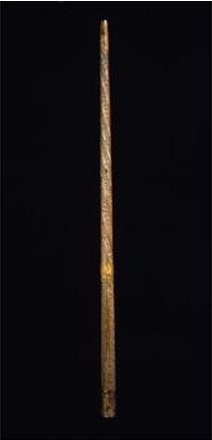It's not often that the horn of a unicorn comes up for auction. Andrew Graham-Dixon examines the mysterious past of a fabulous treasure
David Ekserdjian, head of the sculpture department at Christie's, describes it as one of the most extraordinary finds of his career: ''It was wrapped up in newspaper, inside a cardboard tube, but the minute I held it in my hand I knew I was in the presence of a great and extraordinary object. There is something about its weight and heft, as well as the sheer beauty of its carving. It has an almost tangible power, something you can feel coursing through your veins. To hold it is, literally, like holding a piece of history.''
Lot 33 in Christie's forthcoming sale of European Sculpture and Works of Art, ''The Property of a Lady'', is described in the somewhat bald language of the auction house as follows: ''A Carved Horn, English, Mid-12th Century.'' It is, in fact, one of the great fabled treasures of the Middle Ages - the horn of a unicorn.
Lot 33 is, indeed, a piece of history. It is also a fake - although its fakeness is, unusually, a vital part of its authenticity, since it is not modern fakeness but medieval fakeness.
The Christie's horn is not, of course, to be scientifically precise, the horn of a unicorn. It is the horn of a narwhal, or Monodon monceros, a small Arctic whale - still occasionally sighted today - with a single horn that can grow in the adult male to a length of 9ft. Such trophies, obtained on very rare occasions during the Middle Ages, presumably by brave and hardy whalers working in freezing seas, were passed off and accepted as the horns of unicorns.
The Christie's horn is...


